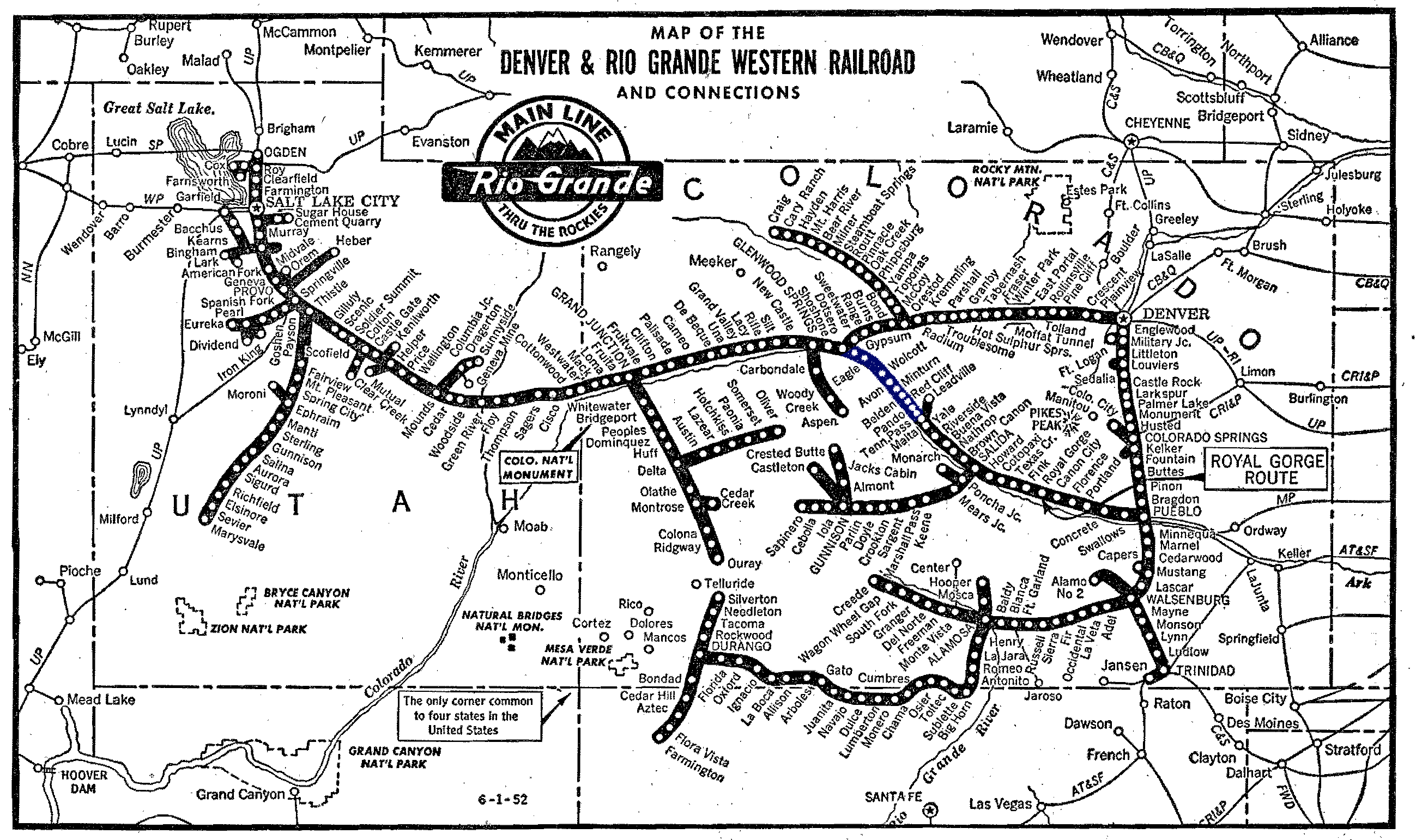Rio Grande's "Tennessee Pass"
Last revised: October 11, 2023
By: Adam Burns
Tennessee Pass is a high mountain pass located in the Rocky Mountains of central Colorado in the United States.
The pass traverses the continental divide north of Leadville in a gap between the northern end of the Sawatch Range to the west and the northern end of the Mosquito Range to the east.
It is historically significant as a transportation route between the valleys of the Arkansas and Eagle rivers, and was used by the Denver and Rio Grande Western and Union Pacific as a major rail artery until 1997.
Photos
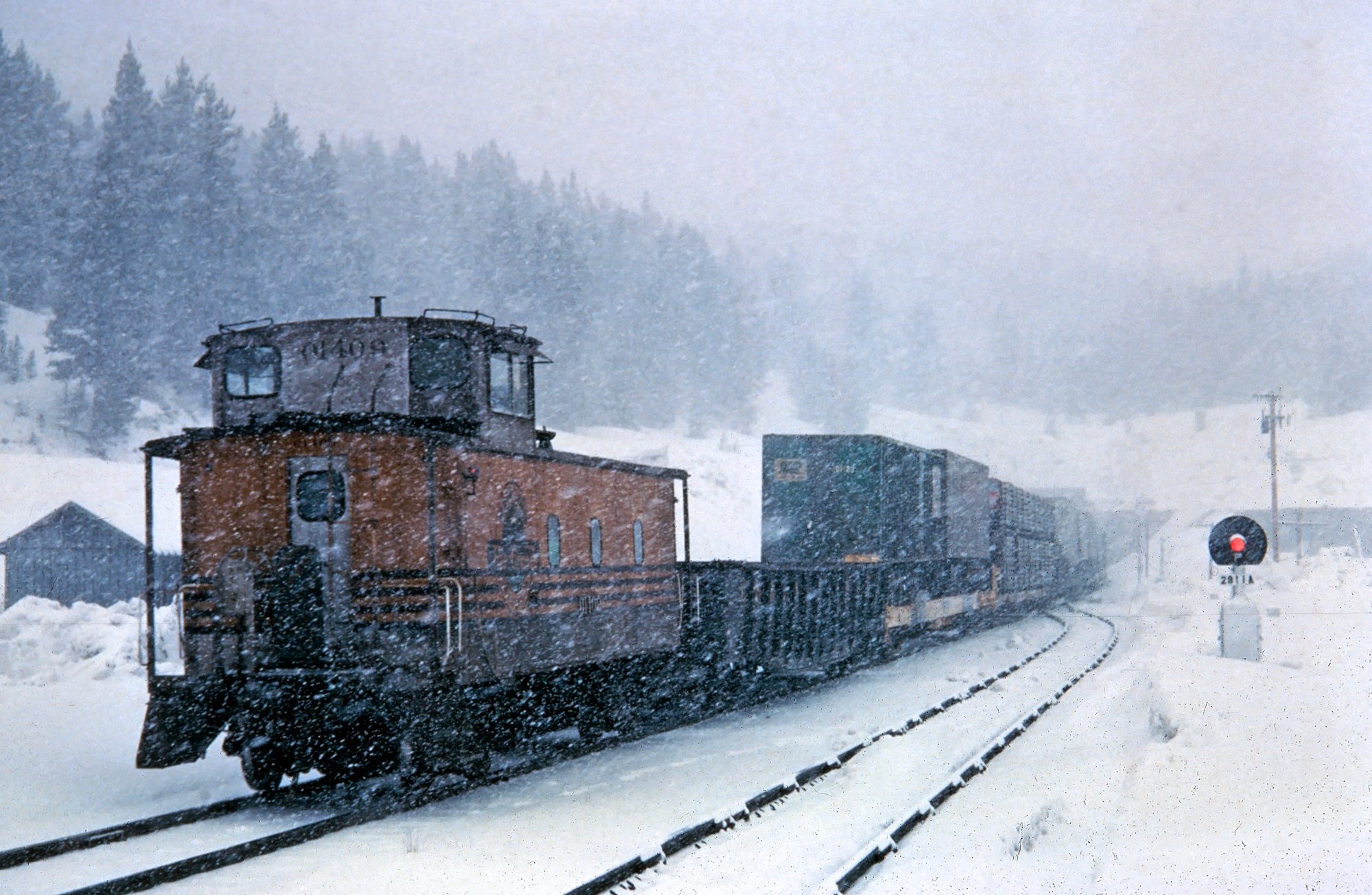 Taken from the east portal of the Tennessee Pass Tunnel, Rio Grande caboose #01409 brings up the tail end of a westbound freight during a heavy snowstorm, circa 1970. American-Rails.com collection.
Taken from the east portal of the Tennessee Pass Tunnel, Rio Grande caboose #01409 brings up the tail end of a westbound freight during a heavy snowstorm, circa 1970. American-Rails.com collection.History
Rio Grande's Tennessee Pass, north of Salida and Leadville, Colorado, enabled the railroad to reach Salt Lake City, Utah via a standard-gauge route in place of its narrow-gauge line already in service west of Salida.
The line's value ebbed and flowed over the years but after the 1996 Union Pacific acquisition the corridor became redundant and was taken out of service the following year.
Today, the line lies dormant although it remains under UP ownership. For a time there was a proposal to reactivate the 228-mile line under a limited liability company known as KCVN, LLC (and its subsidiary, Colorado Pacific Railroad), owned by billionaire Stefan Soloviev.
The proposal was first announced in November, 2019 as the group was interested in running grain shipments over the corridor. The mileage would include the Dotsero to Parkdale, Colorado segment as well as trackage rights into Pueblo.
The group originally offered $10 million for the line (its liquidation value) but UP balked at the proposal. The railroad also attempted to sway the Surface Transportation Board into denying the KCVN's acquisition attempt through legal wrangling. Interestingly, this attempt fell through although ultimately Soloviev had given up on the endeavor by the spring of 2023.
Denver & Rio Grande Western
The Denver and Rio Grande Western, also known as simply the Rio Grande, is one our country's most famous railroads.
Its speed-lettering herald is likewise one of the most recognized of all time and people continue to flock to its scenic routes to travel trains such as the California Zephyr and the Durango & Silverton, perhaps the most famous tourist line in the country which operates several miles of the D&RGW's former narrow-gauge trackage in southern Colorado and northern New Mexico.
While the railroad officially became a fallen flag in 1996 when the Union Pacific took over the Southern Pacific the railroad's identity had mostly disappeared before that when its parent company Rio Grande Industries purchased the SP in 1988 and began consolidating D&RGW operations into the much larger railroad.
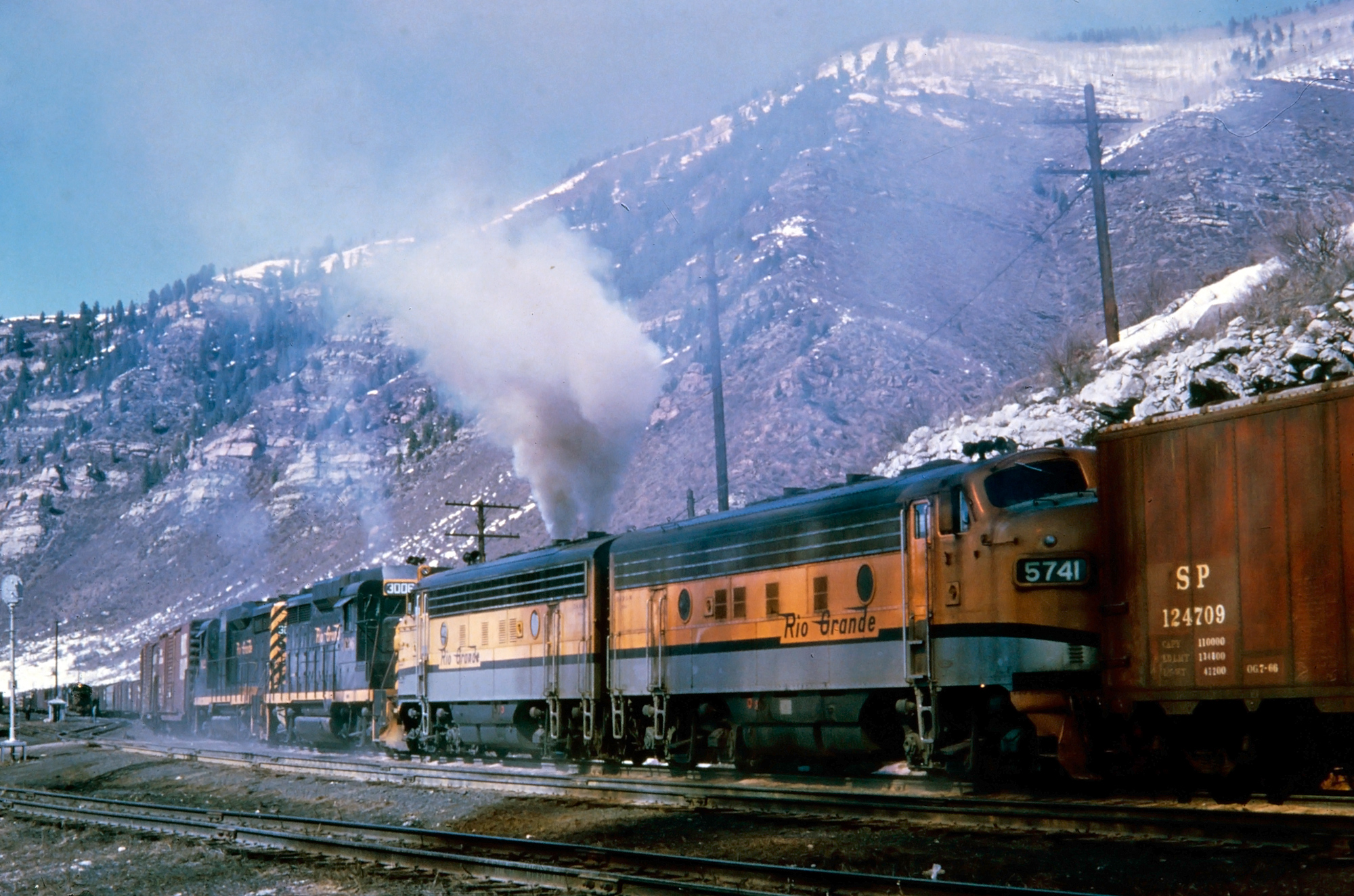 A set of Rio Grande F7A's (with #5741 closest to the photographer) and GP30's work helper service on Tennessee Pass as the train passes Minturn Yard, circa 1963. American-Rails.com collection.
A set of Rio Grande F7A's (with #5741 closest to the photographer) and GP30's work helper service on Tennessee Pass as the train passes Minturn Yard, circa 1963. American-Rails.com collection.Construction
Before the Rio Grande was able to acquire the Moffat Tunnel, construct the Dotsero Cutoff, and reduce significantly reduce operating times and grades it had to find a cost effective means over the Rocky Mountains.
Then known as the Denver & Rio Grande the railroad only had one means of connecting Denver with Salt Lake City, a narrow-gauge route it had opened between Salida, Montrose, and Grand Junction in 1883.
While effective in opening a transportation artery between the two cities the route was hampered due to its narrow-gauge status, thus limiting the amount of traffic which could be interchanged with other standard-gauge lines (by the 1880s, most main line across the country had converted to standard-gauge).
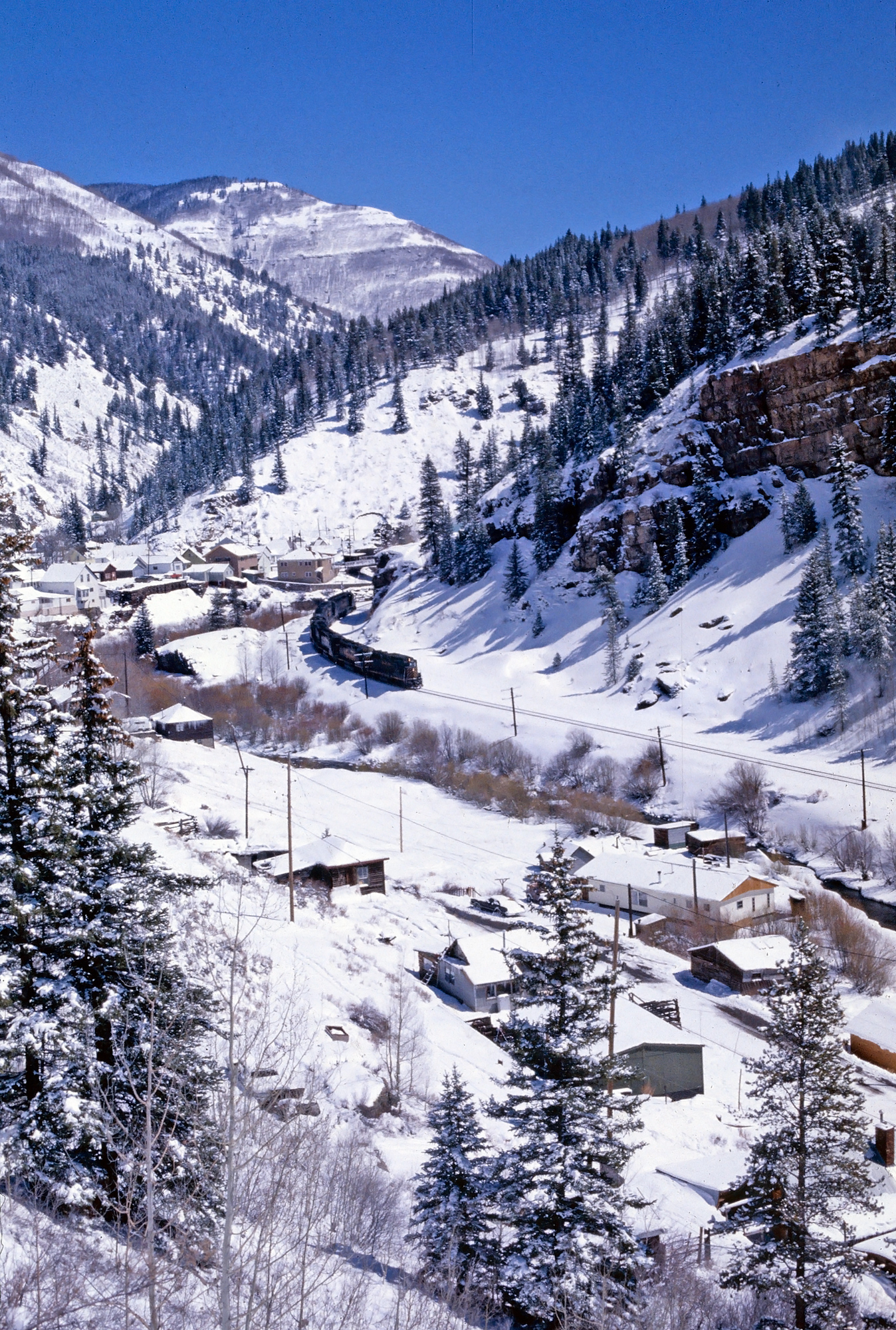 A seven-unit helper set of Rio Grande power runs light through Red Cliff, Colorado on Tennessee Pass in March, 1981. American-Rails.com collection.
A seven-unit helper set of Rio Grande power runs light through Red Cliff, Colorado on Tennessee Pass in March, 1981. American-Rails.com collection.To alleviate this issue the D&RG began looking at the prospect of constructing a new route over the Rocky Mountains, eventually choosing a heading north of Leadville and following the Colorado River. Ahead of building this new line they upgraded their route between Denver, Pueblo, and Leadville to standard gauge as well.
In the late 1880s construction began with the hardest section to complete the Tennessee Pass Tunnel. In 1890 the D&RG was able to complete the new line to its previous connection at Grand Junction, Colorado (where it connected with the Rio Grand Western that reached Salt Lake City) and around the same time its original tunnel over the pass opened at an elevation of 10,239 feet.
Map
Operation
Grades remained above 3% in some areas but the line was entirely standard-gauged and allowed the D&RG to pick up lucrative interchange traffic heading west from Denver and east from Salt Lake City. In 1945 the then Denver & Rio Grande Western constructed a new tunnel at around the same altitude as the original.
It was just 2,550 feet in length and while it contained a 3% grade on the westward approach the eastward heading contained just a 1.5% grade. In 1931 the D&RGW took control of the Denver & Salt Lake Railway whose claim to fame was constructing the massive 6.21-mile Moffat Tunnel that had opened in 1928.
This route was just north of Denver and allowed for a much more direct connection with Salt Lake City after the D&RGW completed the Dotsero Cutoff. As such the Tennessee Pass Tunnel and route southward through Leadville became the railroad's secondary main line to Denver.
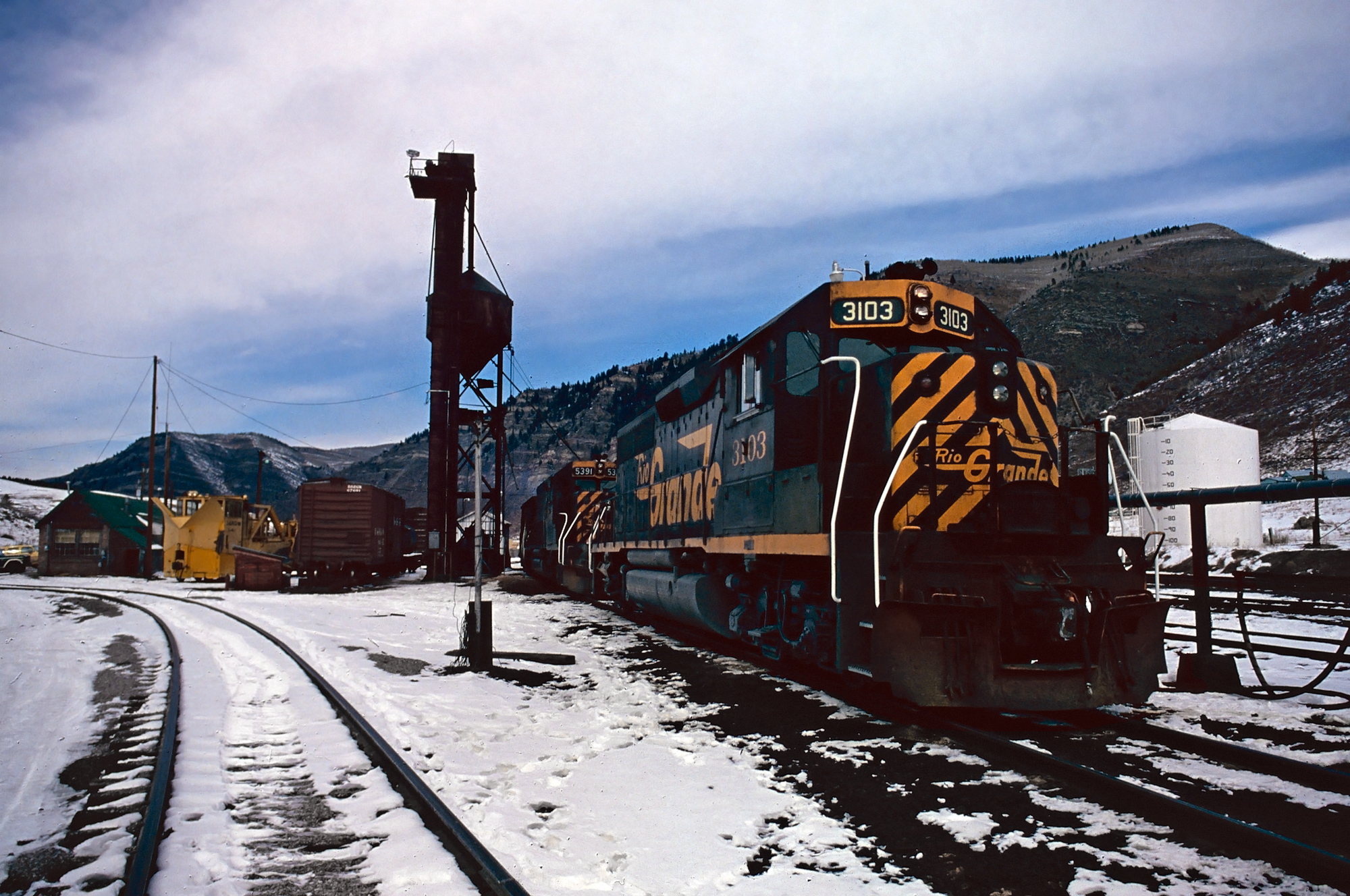 Rio Grande GP40-2 #3103 and SD40T-2 #5391 layover at the small engine terminal in rural Minturn, Colorado on Tennessee Pass in March of 1981. American-Rails.com collection.
Rio Grande GP40-2 #3103 and SD40T-2 #5391 layover at the small engine terminal in rural Minturn, Colorado on Tennessee Pass in March of 1981. American-Rails.com collection.Shutdown
However, the route gained new importance after the Southern Pacific merger of 1988 due to the increased traffic coming from western points like the ports of California. Once Union Pacific purchased the SP in 1996 this newfound life for the pass came to an end.
With UP now owning both the SP and D&RGW lines it had no use for the route as all traffic movements could be handled through Moffat Tunnel. Because of this, a year later in August, 1997 UP mothballed the line through Leadville.
While initially wishing to outright abandon the line realizing a competitor such as then Burlington Northern Santa Fe may step in and purchase the route the railroad decided to retain the line, which it still owns today. Whether the route ever sees trains again will likely be dependent on the demand for rail in the future, as Moffat Tunnel is currently near capacity with more than two-dozen trains passing through it every day.
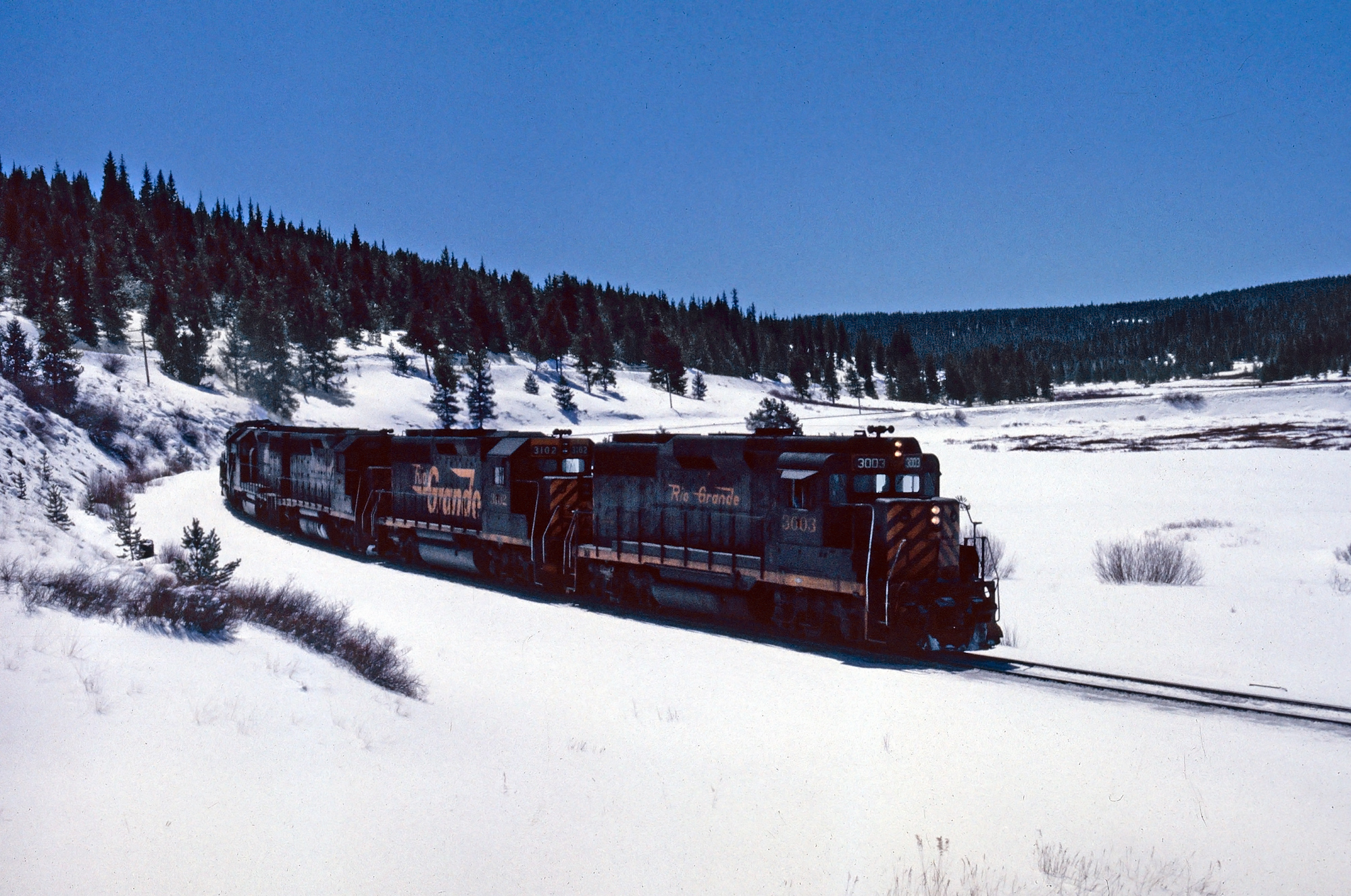 A seven-unit helper set of Rio Grande power, with GP30 #3003 closest to the photographer, runs light along the eastern side of Tennessee Pass at Piney Gulch, Colorado in March of 1981. American-Rails.com collection.
A seven-unit helper set of Rio Grande power, with GP30 #3003 closest to the photographer, runs light along the eastern side of Tennessee Pass at Piney Gulch, Colorado in March of 1981. American-Rails.com collection.Current Status
Interest in reviving Tennessee Pass first began in November, 2019 when a group known as KCVN, LLC, through their subsidiary, Colorado Pacific Railroad, wanted to reopen the corridor for both freight and passenger service.
Union Pacific apparently had no interest in this group operating the long dormant line. Instead, in early 2020 it was accidentally disclosed that UP had been in discussion with Rio Grande Pacific about leasing the corridor with the intent of hauling 400,000 barrels of per day of raw crude oil handed from Utah's Uinta Basin via the Uinta Basin Railway.
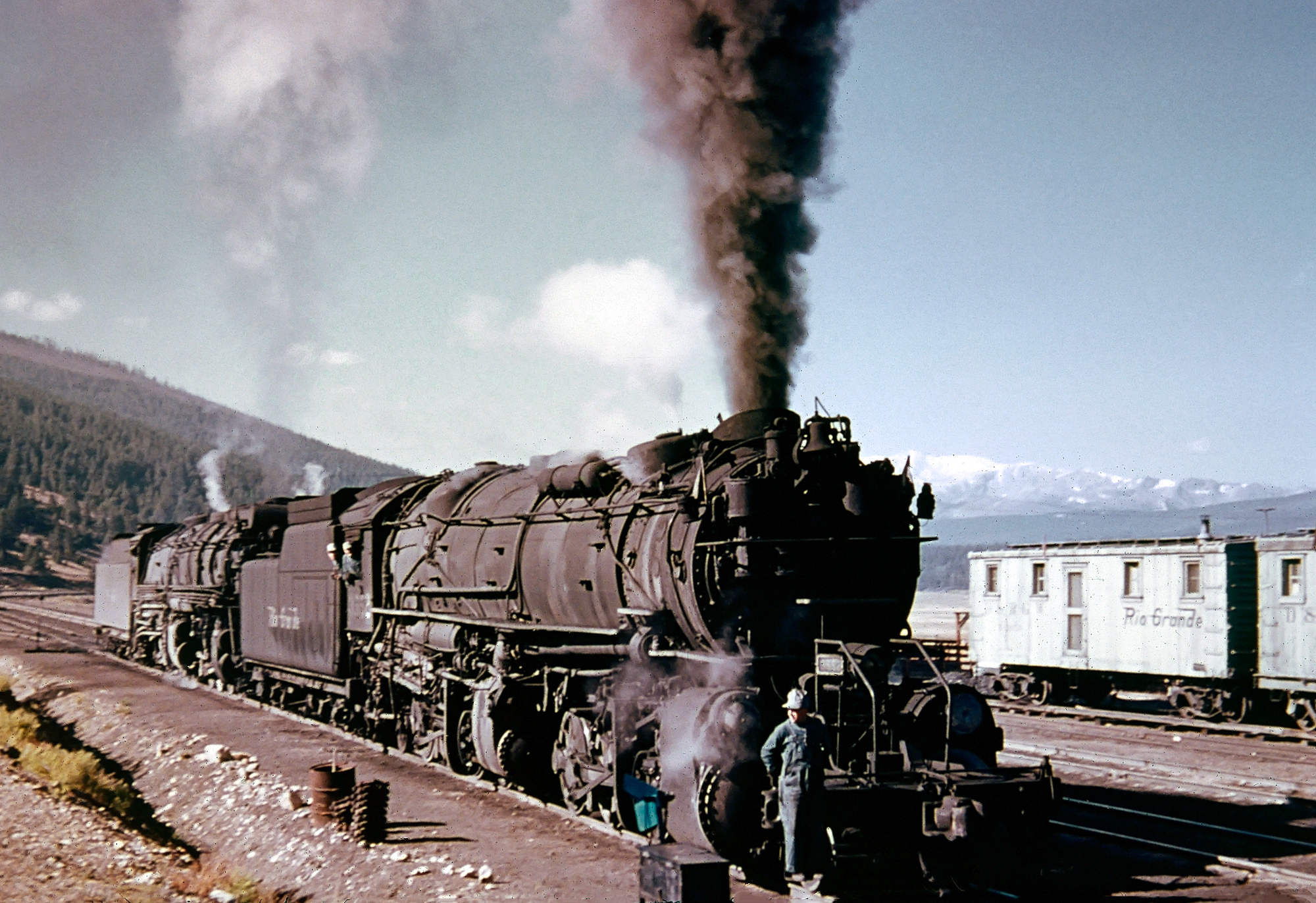 Rio Grande 2-8-8-2's #3552 (L-109) and #3617 (L-132) run light between helper assignments on Tennessee Pass in the summer of 1949. The lead unit, #3552, was built as Norfolk & Western #1724 and acquired by the D&RGW in 1943. She was scrapped in March, 1950. Robert LeMassena photo. American-Rails.com collection.
Rio Grande 2-8-8-2's #3552 (L-109) and #3617 (L-132) run light between helper assignments on Tennessee Pass in the summer of 1949. The lead unit, #3552, was built as Norfolk & Western #1724 and acquired by the D&RGW in 1943. She was scrapped in March, 1950. Robert LeMassena photo. American-Rails.com collection.This traffic would then work its way to Gulf Coast refineries. The Uinta Basin Railway project is still in the planning stages. Nevertheless, Rio Grande Pacific's new common-carrier, the Colorado Midland & Pacific Railway (CM&P), planned to forge ahead. President Robert Bach stated:
“We look forward to engaging in the transportation planning work already underway to determine how the Tennessee Pass Line might play a role. It’s exciting to bring this additional option to the table.”
The CM&P stated it would lease 163.1 miles of the Tennessee Pass between milepost 171.9 at Parkdale, Colorado to Milepost 335.0 near Sage, Colorado.
The company believed its annual revenue will not exceed $5 million and will aggressively pursue interest in freight and passenger service along the route. Unfortunately, this attempt also ultimately fell through and the corridor still remains under Union Pacific ownership.
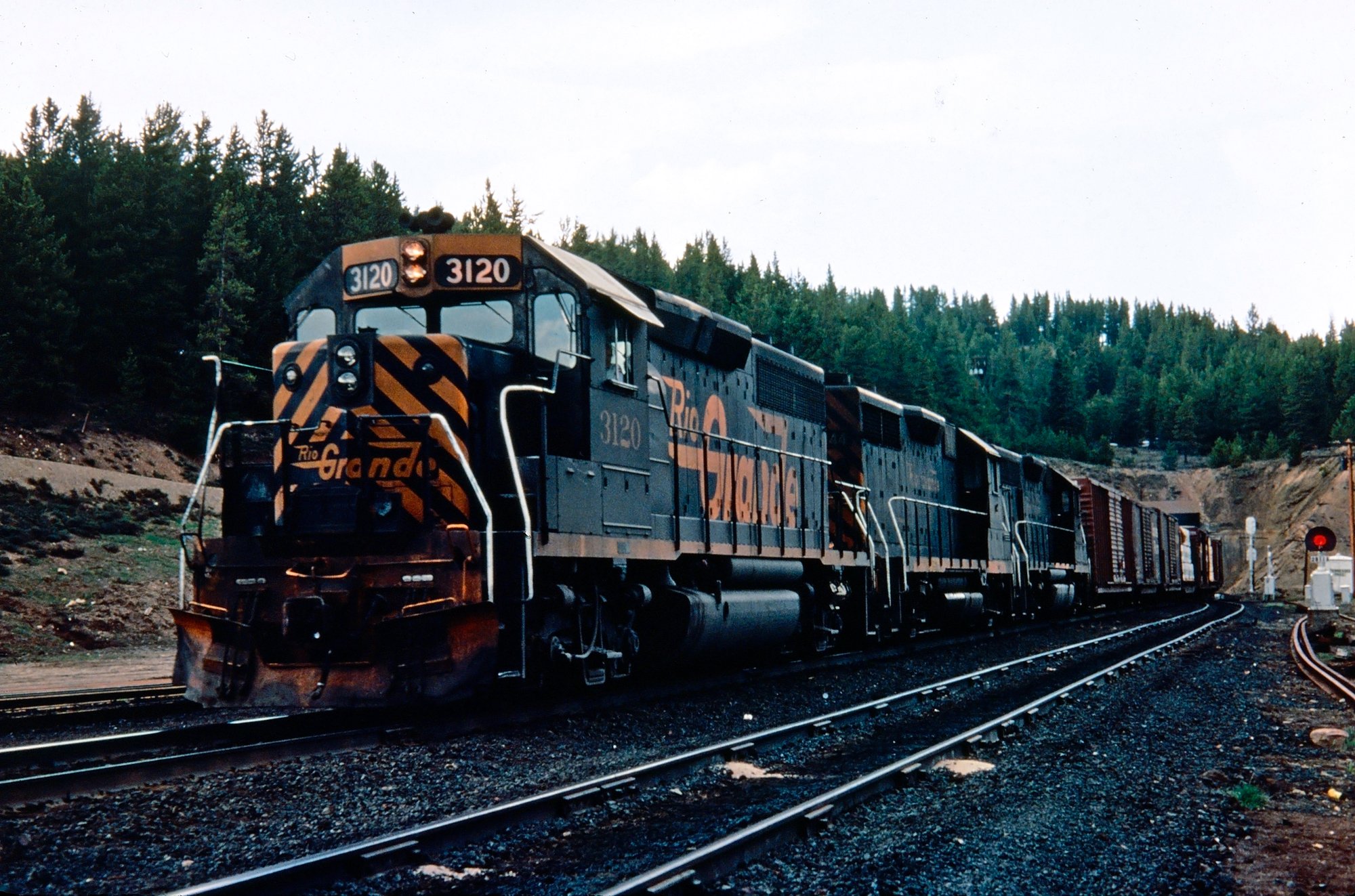 Rio Grande GP40-2 #3120 leads an eastbound freight out of the east portal of Tennessee Pass Tunnel, circa 1975. American-Rails.com collection.
Rio Grande GP40-2 #3120 leads an eastbound freight out of the east portal of Tennessee Pass Tunnel, circa 1975. American-Rails.com collection.Sources
- Griffin, James R. Rio Grande Railroad. St. Paul: Voyageur Press, 2003.
- Schafer, Mike. Classic American Railroads. Osceola: MBI Publishing, 1996.
Contents
SteamLocomotive.com
Wes Barris's SteamLocomotive.com is simply the best web resource on the study of steam locomotives.
It is difficult to truly articulate just how much material can be found at this website.
It is quite staggering and a must visit!

